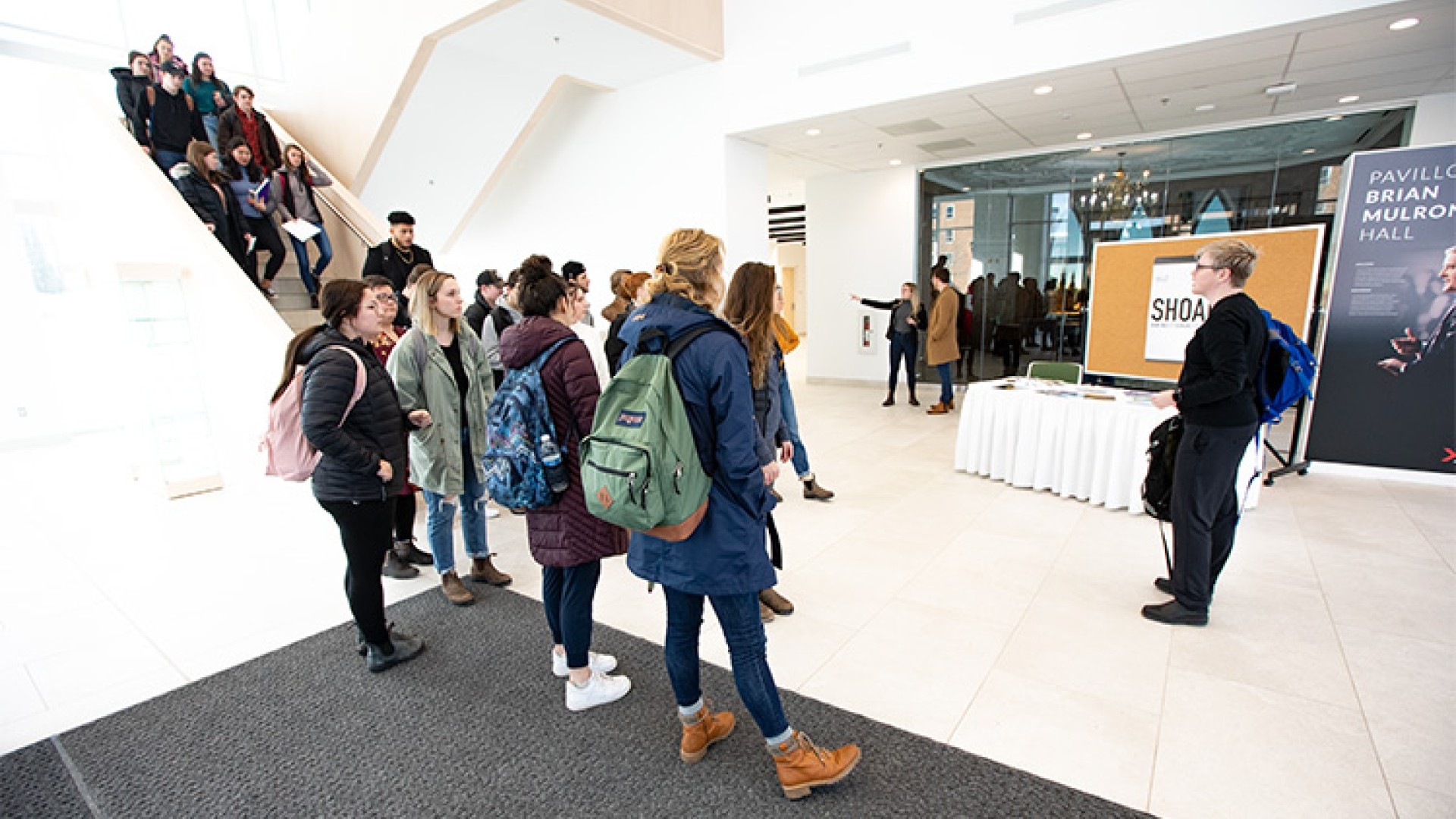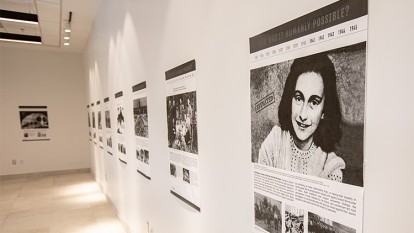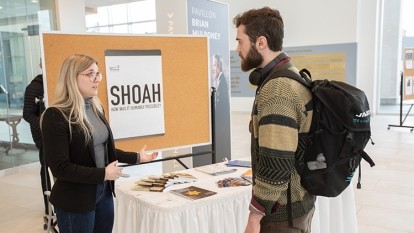
All those entering the lobby of Mulroney Hall on the StFX campus on January 27, 2020 had an amazing opportunity to learn and talk about Holocaust education with a number of StFX students.
Students from psychology professor Dr. Karen Blair’s Psyc 441 held an all-day event for International Holocaust Remembrance Day, displaying their final projects for the course, and being on hand to speak with all those who passed through.
Dr. Blair and the students had a visual display from Yad Vashem to hang in the art gallery space behind the replica of the Prime Minister’s office. In the lobby area, one group of students worked on a project aimed at “visualizing” six million victims, and another group working on activities to reduce prejudice. They also hosted a book display and educational materials and presented a video.

“I’ve been talking a lot about Holocaust education, and the misconceptions many students have,” says psychology student Cassidy Swan of Ottawa, ON. She says in her conversations she’s found that a lot of students know the basics of the Holocaust, but don’t know the when and the how and the steps in between that lead up to that point. It’s knowledge, she says, that people need to know more about.
“The knowledge is still valuable and needs to be taught.”
Fellow psychology students Alice Bruce of Pictou, NS and MacGillivray Smith of Enfield, NS, say they’ve had good response to the day, with several professors taking their classes through, and many community members and students stopping to talk.
Ms. Bruce says they’ve found people have varying degrees of knowledge about the Holocaust as Ms. Smith added the education is important for preventing future genocides. “In our class, we talked about the build-up to that and how you need to speak up for your believes before people start getting persecuted.”
FINAL PROJECT ASSIGNMENT
“The students in Psyc 441, which is a fourth year seminar course on the “Social Psychology of the Holocaust,” were given a final project assignment to “prevent the next Holocaust.” It was a lofty goal meant to be interpreted in abstract ways,” says Dr. Blair.
Each student had to decide how they would define the challenge for themselves - defining what is meant by the possibility of another Holocaust. “Does this mean genocide in general? The building blocks within society that allow for genocides, such as prejudice and exclusion?” says Dr. Blair. “In the end, most of the students developed projects related to Holocaust education, believing that education is a key element to reducing prejudice. People who know the details of the Holocaust and how it came to be are much more supportive of the need for Holocaust education and tend to be less supportive of extremist and prejudiced views.”

The students combined their efforts to create the event for International Holocaust Remembrance Day, she says.
Some of the events they’ve put together include the visualizing six million project. This project attempts to grapple with the fact that fewer than half of Canadian adults can identify six million as the number of Jewish men, women, and children murdered during the Holocaust. This may, in part, be because it is so difficult to grapple with such a large number. It’s simply unfathomable, Dr. Blair says.
The students have been working for months to try to cut six million pieces of paper. They actually wanted to cut 11 million to represent all of the victims of Nazi persecution.
“Just now, as they are continuing to cut paper in the lobby of Mulroney Hall, they are about to reach one million, helping to drive home just how large these numbers are.”
As well, Dr. Blair said each student in the course was assigned a “twin” who was a child that died during the Holocaust and shared the same birthday as the student. They researched to find out as much as they could about this person. They’ve created a visual display about each twin, hanging in the art gallery area.
One student looked into what types of Holocaust education are provided in high schools and what people feel is lacking. The student compiled a list of facts that people commonly don’t know and has been talking to people about their Holocaust education experiences. As well, another student is building a Holocaust education website while another is working on a Holocaust education podcast and documenting the day and the course.
The Atlantic Jewish Council and the Azrieli Foundation also provided a number of Holocaust memoirs for the group to give away to students at the event.
"Holocaust knowledge is declining and the survivors will soon not be with us to share their stories in person. Consequently it’s a very important time to raise interest in Holocaust education to ensure that this knowledge is not lost to future generations. The universal lessons of the Holocaust can help us to understand important social issues today as well as those that we will face in the future," says Dr. Blair.
The visual display in the gallery area will remain up all week until Friday for people to walk through.

